
| 
|

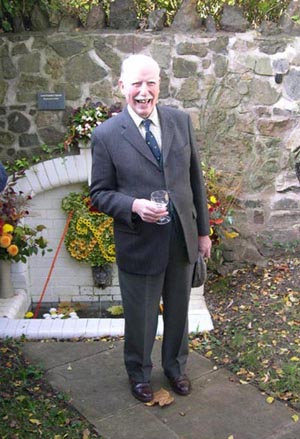
Friends Newsletter No. 28
November 2009
Who are our Friends? Friends promote research, conservation and celebration of the Springs, Spouts, Fountains and Holy Wells of the Malvern Hills and of Great Malvern as a
Lord Sandys - South and North
Lord Sandys Spout is one of the most northerly water features in the Malverns; Holy Well one of the most southerly. The water trickling from the bronze lion's head at Lord Sandys Spout is unsuitable for drinking so it was appropriate on 19th October 2009 to toast the completion of its refurbishment with glasses of Holy Well water.
On this sun-blessed occasion, Lord Richard Sandys of Ombersley referred to his distantly-related ancestor, Dr John Wall, who, like himself, had an interest in Malvern spring water. In 1740 Dr Wall had married Catherine, the youngest daughter of Martin Sandys, the Town Clerk of the City of
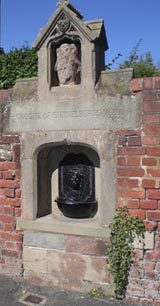 Lord Sandys Spout has had some of its lavatorial brickwork replaced in a not-quite-matching white, but time, grime and slime may reduce the contrast. During the renovation, pieces of glass and earthenware were unearthed, remnants of J.G Bennett's bottling industry? These shards have been delightfully incorporated into the repaired Malvern stone wall to the right of the spout, a reminder that Malvern water bottling was a more prolific industry than it is now.
Lord Sandys Spout has had some of its lavatorial brickwork replaced in a not-quite-matching white, but time, grime and slime may reduce the contrast. During the renovation, pieces of glass and earthenware were unearthed, remnants of J.G Bennett's bottling industry? These shards have been delightfully incorporated into the repaired Malvern stone wall to the right of the spout, a reminder that Malvern water bottling was a more prolific industry than it is now.
Renovation such as this keeps Malvern's water heritage alive. Well done everyone. Cora Weaver
Do have a look at the site if you are in Malvern Link. It is in Spring Lane.
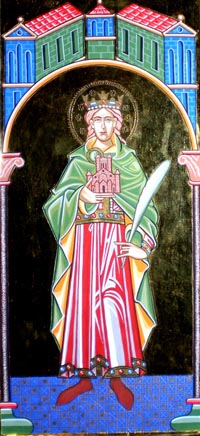
Mulberry Tree International Link
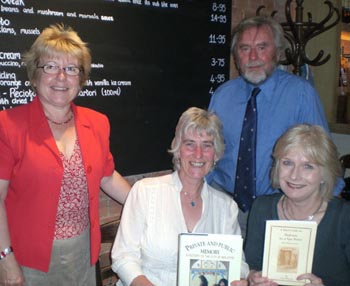 Di Foster, Local History Officer who has been involved in the Mulberry Tree project. As well as a climb to the top of the Worcester Beacon, the party were entertained by Denise Preston from Malvern Civic Society who took them on a conducted walk around Great Malvern. A highlight of the weekend was the inspection of two of the six Mulberry Tree saplings, which had 6 weeks of acclimatisation and growth in
Di Foster, Local History Officer who has been involved in the Mulberry Tree project. As well as a climb to the top of the Worcester Beacon, the party were entertained by Denise Preston from Malvern Civic Society who took them on a conducted walk around Great Malvern. A highlight of the weekend was the inspection of two of the six Mulberry Tree saplings, which had 6 weeks of acclimatisation and growth in
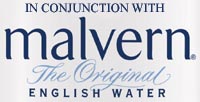 For further updates on this project keep an eye on our dedicated web site at www.malvernsworldwide.info where there are pictures and background information. In the picture Cora, Bruce and Denise exchange local history books with Di Foster, before embarking on an exploration of Great Malvern and the hills.
For further updates on this project keep an eye on our dedicated web site at www.malvernsworldwide.info where there are pictures and background information. In the picture Cora, Bruce and Denise exchange local history books with Di Foster, before embarking on an exploration of Great Malvern and the hills.
Malvern Hills more a National Park than the real thing in the
This year the Conservators celebrate their 125 Anniversary and you will likely have seen the 12 page special in the 30 Oct. Malvern Gazette. In our last newsletter we postulated the idea that the Malvern Hills were
Re the item on national parks, I was the first director of a new conservation organisation, set up in
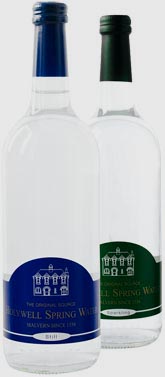 owned and the National Park legislation curtails the rights of the landowner to develop the land. However with the
owned and the National Park legislation curtails the rights of the landowner to develop the land. However with the
Holy Well Water now available in bottles.
We are pleased to be able to report that bottling of the Holywell Spring Water from Malvern Wells commenced this summer. This follows an extensive programme of restoration of the historic building and surrounds by Mike and Marion Humm from the Thornbury Hotel in Avenue Road. The smart glass bottles with their green and blue label are already appearing in restaurants in the area and anyone wishing to sample the elixir could call into The Thornbury in Avenue Road. The Holy Well has a long provenance of recorded history dating back to the early 17th century and bottling of the water has been carried out at various times in the past. There is also a useful interpretation board within the public well facility at Holy Well, where the water can also be drunk from the recently restored spout and basin. Lying three miles south of Great Malvern, the Holy Well is well worth a visit when touring the springs and wells. Have a look at the web site http://www.holywellspringwater.co.uk
What has happened to Dr Grindrods Fountain? 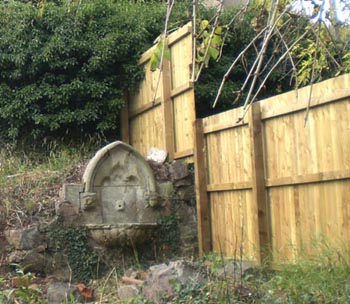
We were alarmed to see that Dr Grindrods Fountain has been fenced off in conjunction with the new development of the site of his former spa in
We are now making plans for the tree planting celebrations for the grandchild of George Bernard Shaw’s original Mulberry Tree in
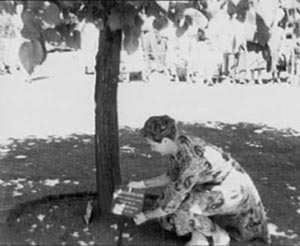 and its subsequent demise and reincarnation. Watch this space for details. There may also even be an opportunity to dance around the Mulberry Bush. In the meantime who is that messing about with the original Mulberry Tree in
and its subsequent demise and reincarnation. Watch this space for details. There may also even be an opportunity to dance around the Mulberry Bush. In the meantime who is that messing about with the original Mulberry Tree in
Go to WEB SITE INDEX from the green panel above left and then click on the entry.
Where is the World War II Relic?
The Charles Morris Spout in
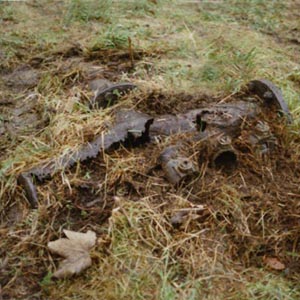 until recently, an interesting relic of an early World War II fire hydrant. It lay in the grass and of the five or six brass hose connector nozzles, only three remained. The hydrant was connected to a six inch iron pipe supply. During a recent search we were only able to locate the remains of an iron pipe flange in the grass. What has happened to the rest of it? Do you know? If so let us know. Should it be in
until recently, an interesting relic of an early World War II fire hydrant. It lay in the grass and of the five or six brass hose connector nozzles, only three remained. The hydrant was connected to a six inch iron pipe supply. During a recent search we were only able to locate the remains of an iron pipe flange in the grass. What has happened to the rest of it? Do you know? If so let us know. Should it be in
Mulberry Tree - site and spring.
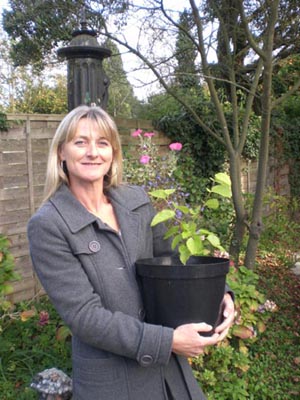 position and look forward to them growing next spring. Our plan is to distribute the saplings to a variety of locations and so in the hands of experts, they will each be dealt with in a slightly different manner. This way we hope to spread the risk of losing one or two and provide some with what may transpire to be the perfect conditions to lead to healthy growth next
position and look forward to them growing next spring. Our plan is to distribute the saplings to a variety of locations and so in the hands of experts, they will each be dealt with in a slightly different manner. This way we hope to spread the risk of losing one or two and provide some with what may transpire to be the perfect conditions to lead to healthy growth next
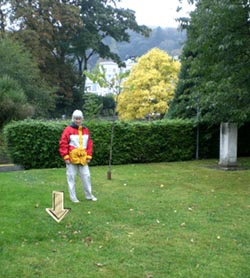
Email: springs@thespas.co.uk (click here to send an email)
Website: Click Here
SUPPLEMENTARY INFORMATION
 Newsletter Archive which can also be accessed from our WEB SITE INDEX.
Newsletter Archive which can also be accessed from our WEB SITE INDEX.
Friendship - There is no charge made for joining Friends of Malvern Springs and Wells. Just let us have your email address and we will send our newsletters, which are usually two monthly. Please be aware that some email addresses block large circulation emails. Do feel free to participate in our activities by contacting us below.
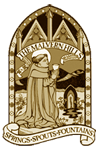
Best wishes, Cora & Bruce
Tel. 01737 213169 email bruce@thespas.co.uk
Tel. 01684 561215 email cora@malvernspa.com
1) TOPOGRAPHICAL LOCATION:
Malvern Hills - arguably Britain's original National Park
3) INFORMATION CATEGORY:
Springs and Wells General InterestHistory & Heritage
Friends Newsletter


